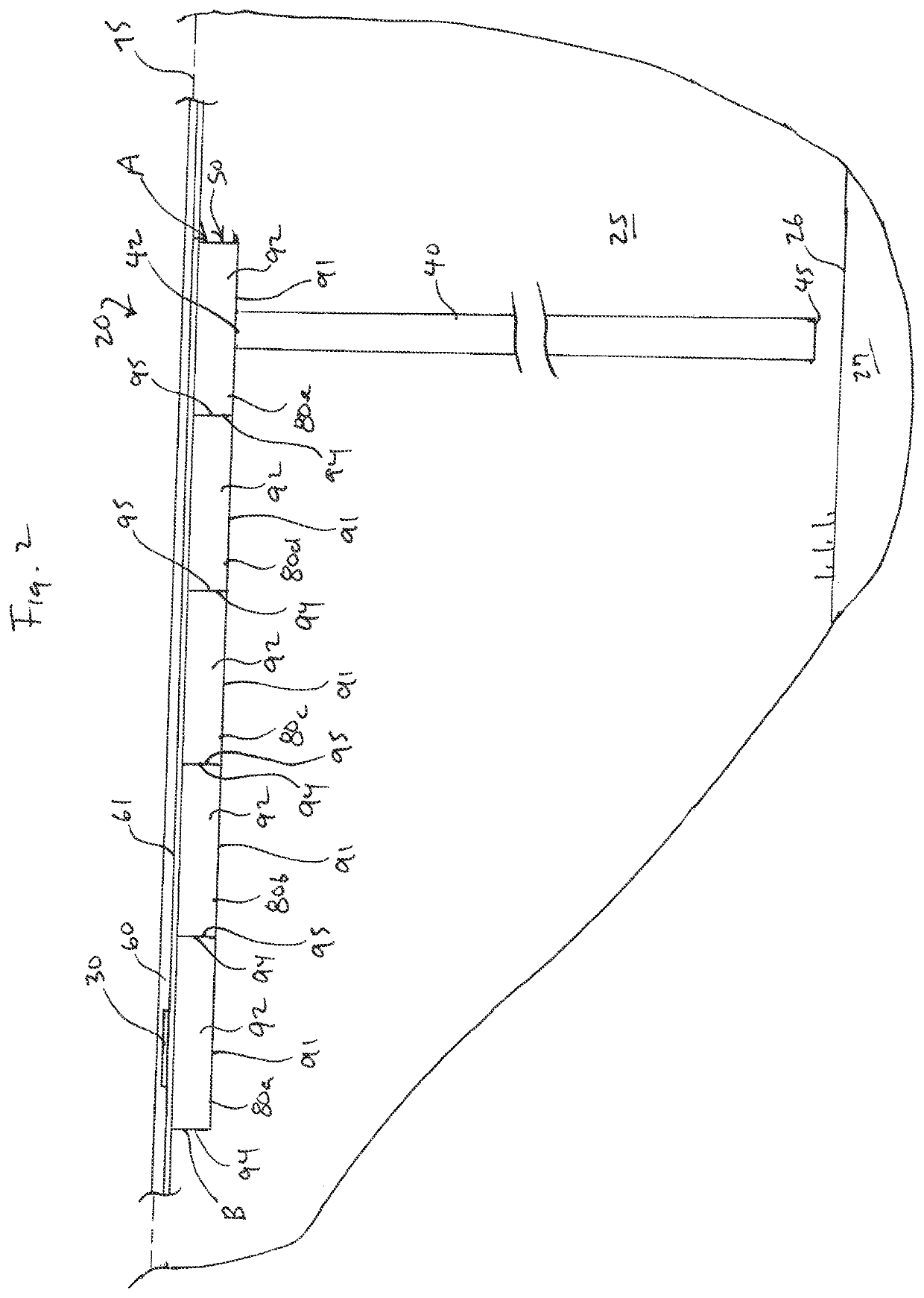Stormwater collection, treatment, and aquifer replenishment installations and methods
a technology for stormwater and aquifers, applied in the field of stormwater drainage, can solve the problems of inability to collect stormwater, exceed the practical sustained yield, and affect the quality of stormwater discharge,
- Summary
- Abstract
- Description
- Claims
- Application Information
AI Technical Summary
Benefits of technology
Problems solved by technology
Method used
Image
Examples
Embodiment Construction
[0028]Disclosed herein are stormwater collection, treatment, and aquifer replenishment installations and methods useful for collecting surface stormwater, processing the surface stormwater into treated stormwater, and positively supplying / replenishing / recharging an aquifer with the treated stormwater, according to the principle of the invention. As defined herein, the term “aboveground” means located or occurring on, at, or above the surface of the ground being not “underground” meaning beneath the surface of the ground or “subterraneanly” disposed.
I
[0029]Referring to FIGS. 1 and 2, an exemplary embodiment of the invention is a stormwater collection, treatment, and aquifer replenishment installation 20. Installation 20 is a useful and efficient alternative to conventional stormwater management techniques discussed above, especially commonly-used retention basins, detention basins, and infiltration basins and the various problems associated therewith. Installation 20 includes stormwa...
PUM
| Property | Measurement | Unit |
|---|---|---|
| thick | aaaaa | aaaaa |
| thick | aaaaa | aaaaa |
| size | aaaaa | aaaaa |
Abstract
Description
Claims
Application Information
 Login to View More
Login to View More - R&D
- Intellectual Property
- Life Sciences
- Materials
- Tech Scout
- Unparalleled Data Quality
- Higher Quality Content
- 60% Fewer Hallucinations
Browse by: Latest US Patents, China's latest patents, Technical Efficacy Thesaurus, Application Domain, Technology Topic, Popular Technical Reports.
© 2025 PatSnap. All rights reserved.Legal|Privacy policy|Modern Slavery Act Transparency Statement|Sitemap|About US| Contact US: help@patsnap.com



